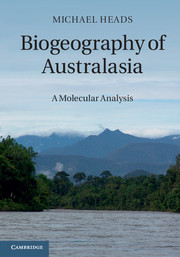Refine listing
Actions for selected content:
2285 results in Ebooks in ecology and environment
6 - The invasion of terrestrial fauna into marine habitat: birds in mangroves
- from Part I - Ancient invaders
-
-
- Book:
- Invasion Biology and Ecological Theory
- Published online:
- 05 February 2014
- Print publication:
- 23 January 2014, pp 103-117
-
- Chapter
- Export citation
Foreword
-
-
- Book:
- Invasion Biology and Ecological Theory
- Published online:
- 05 February 2014
- Print publication:
- 23 January 2014, pp xiii-xiv
-
- Chapter
- Export citation
5 - Invasion ecology of honeyeaters
- from Part I - Ancient invaders
-
-
- Book:
- Invasion Biology and Ecological Theory
- Published online:
- 05 February 2014
- Print publication:
- 23 January 2014, pp 83-102
-
- Chapter
- Export citation
4 - Perspectives from parrots on biological invasions
- from Part I - Ancient invaders
-
-
- Book:
- Invasion Biology and Ecological Theory
- Published online:
- 05 February 2014
- Print publication:
- 23 January 2014, pp 58-82
-
- Chapter
- Export citation
Index
-
- Book:
- Invasion Biology and Ecological Theory
- Published online:
- 05 February 2014
- Print publication:
- 23 January 2014, pp 517-528
-
- Chapter
- Export citation
Part I - Ancient invaders
-
- Book:
- Invasion Biology and Ecological Theory
- Published online:
- 05 February 2014
- Print publication:
- 23 January 2014, pp 21-22
-
- Chapter
- Export citation
16 - The skylark
- from Part II - Modern invaders
-
-
- Book:
- Invasion Biology and Ecological Theory
- Published online:
- 05 February 2014
- Print publication:
- 23 January 2014, pp 351-372
-
- Chapter
- Export citation
11 - Drift of a continent: broken connections
- from Part I - Ancient invaders
-
-
- Book:
- Invasion Biology and Ecological Theory
- Published online:
- 05 February 2014
- Print publication:
- 23 January 2014, pp 241-255
-
- Chapter
- Export citation
10 - Murine rodents: late but highly successful invaders
- from Part I - Ancient invaders
-
-
- Book:
- Invasion Biology and Ecological Theory
- Published online:
- 05 February 2014
- Print publication:
- 23 January 2014, pp 196-240
-
- Chapter
- Export citation
1 - Testing hypotheses about biological invasions and Charles Darwin’s two-creators rumination
-
-
- Book:
- Invasion Biology and Ecological Theory
- Published online:
- 05 February 2014
- Print publication:
- 23 January 2014, pp 1-20
-
- Chapter
- Export citation
Contents
-
- Book:
- Invasion Biology and Ecological Theory
- Published online:
- 05 February 2014
- Print publication:
- 23 January 2014, pp v-vi
-
- Chapter
- Export citation

Biogeography of Australasia
- A Molecular Analysis
-
- Published online:
- 05 December 2013
- Print publication:
- 14 November 2013
References
-
- Book:
- Biogeography of Australasia
- Published online:
- 05 December 2013
- Print publication:
- 14 November 2013, pp 411-483
-
- Chapter
- Export citation
11 - Conclusions
-
- Book:
- Biogeography of Australasia
- Published online:
- 05 December 2013
- Print publication:
- 14 November 2013, pp 402-407
-
- Chapter
- Export citation
Acknowledgements
-
- Book:
- Biogeography of Australasia
- Published online:
- 05 December 2013
- Print publication:
- 14 November 2013, pp xii-xii
-
- Chapter
- Export citation
Index
-
- Book:
- Biogeography of Australasia
- Published online:
- 05 December 2013
- Print publication:
- 14 November 2013, pp 484-493
-
- Chapter
- Export citation
3 - Global affinities of Australasian groups
-
- Book:
- Biogeography of Australasia
- Published online:
- 05 December 2013
- Print publication:
- 14 November 2013, pp 71-132
-
- Chapter
- Export citation
4 - Biogeography of Australia
-
- Book:
- Biogeography of Australasia
- Published online:
- 05 December 2013
- Print publication:
- 14 November 2013, pp 133-180
-
- Chapter
- Export citation
6 - Distribution in and around the Tasman region
-
- Book:
- Biogeography of Australasia
- Published online:
- 05 December 2013
- Print publication:
- 14 November 2013, pp 204-245
-
- Chapter
- Export citation
Abbreviations and terms
-
- Book:
- Biogeography of Australasia
- Published online:
- 05 December 2013
- Print publication:
- 14 November 2013, pp 408-408
-
- Chapter
- Export citation
